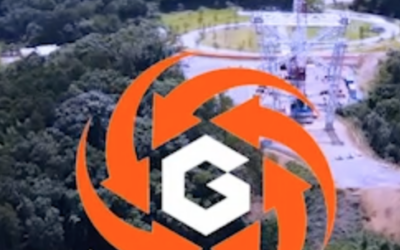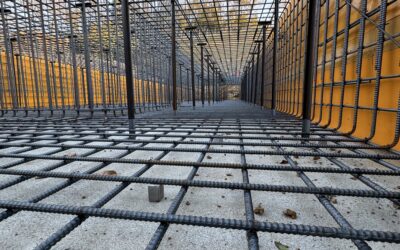Bridge Design - Design Criteria and Detailed Design Process
This post highlights the uniqueness, accessibility, technical complexity, appeal and detailed design process that went into building Japan’s longest suspension bridge for pedestrians.
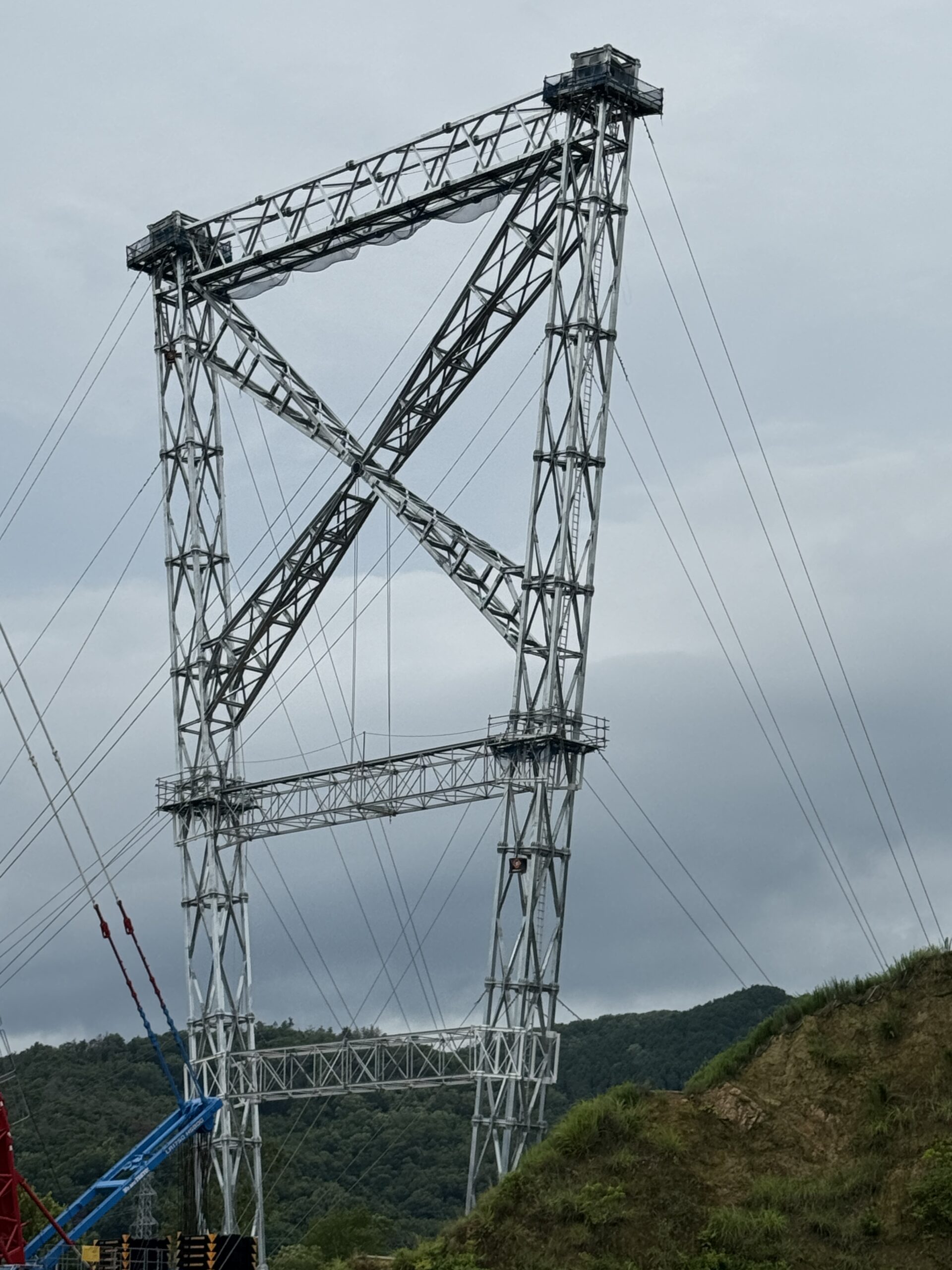
Design Criteria:
1. **Uniqueness**
– Design a bridge that stands out globally.
– Create a landmark that embodies the pride of Japan and Osaka.
2. **Universal Accessibility**
– Ensure the bridge allows wheelchair access.
– Design the bridge wide enough for wheelchairs to pass each other comfortably.
– Provide entrance points from both ends of the bridge.
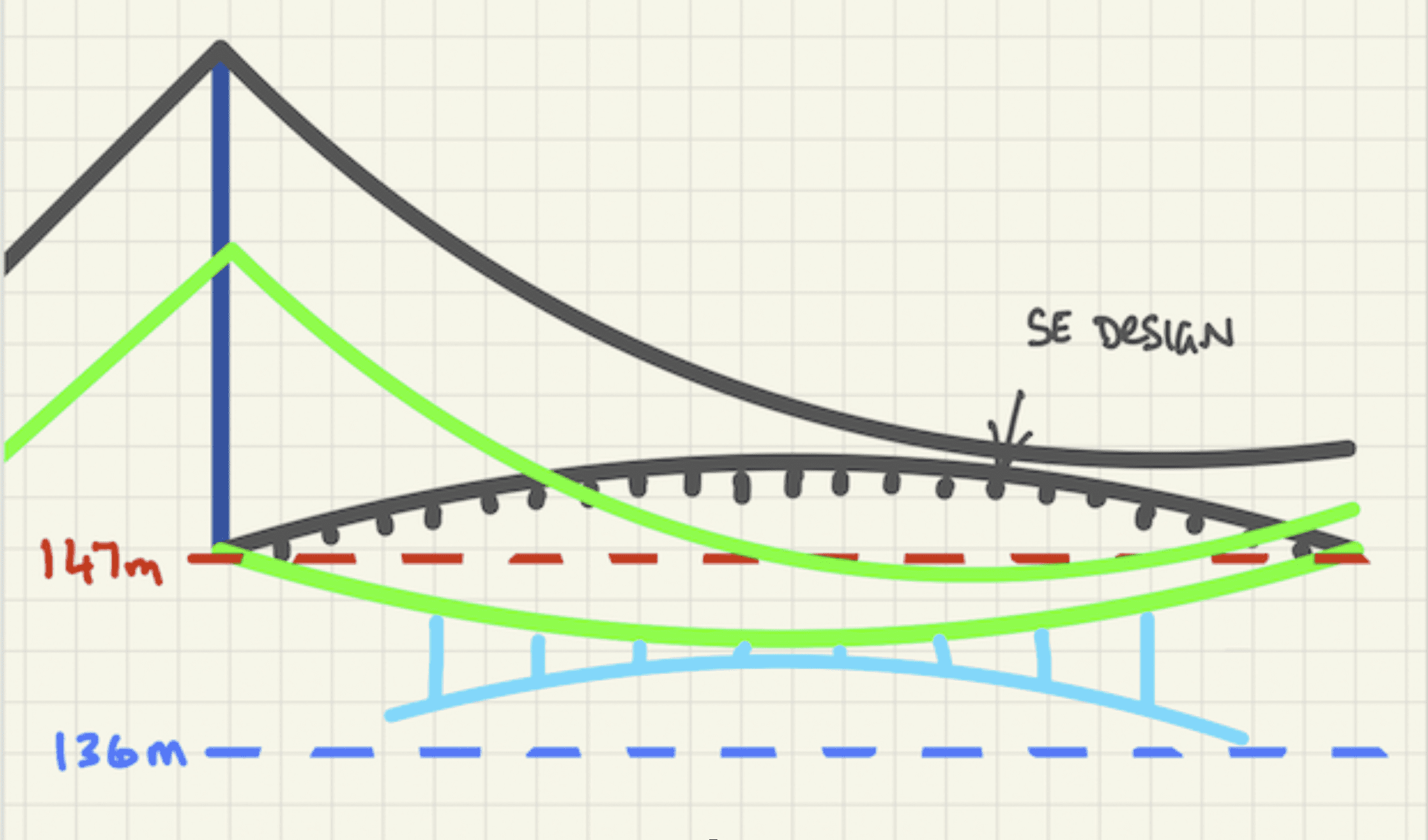
3. **Aesthetic and Technical Complexity**
– Develop an attractive design that is technically advanced and complex.
– Make the bridge visually striking and photogenic, particularly from the Dam.
– Ensure the bridge is unique and difficult to replicate.
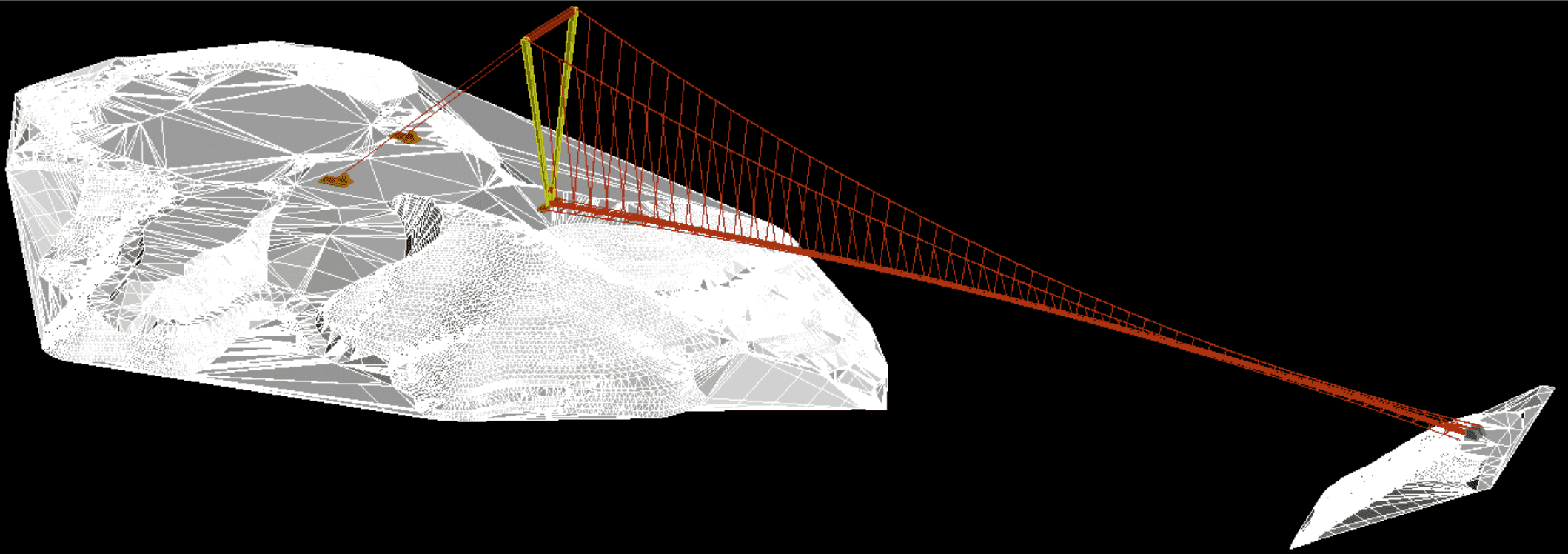
4. **Visitor Appeal**
– Create a bridge that attracts visitors from across the country and around the world.
– Offer a fun, interesting, visually appealing, and exciting experience.
– Design for a wide demographic, including children and grandparents.
5. **Movement and Excitement**
– Design the bridge to move or sway slightly with a cyclical motion rather than a shaking movement.
– Ensure the bridge’s height and motion create an exciting or slightly scary experience for about 10% of the general public.
– Make people walking on the bridge visible from any point along the bridge and from both ends.
– Allow people on the bridge an unobstructed view 360 degrees
6. **Structural Strength**
– Ensure the bridge is strong enough to withstand typhoons and earthquakes.
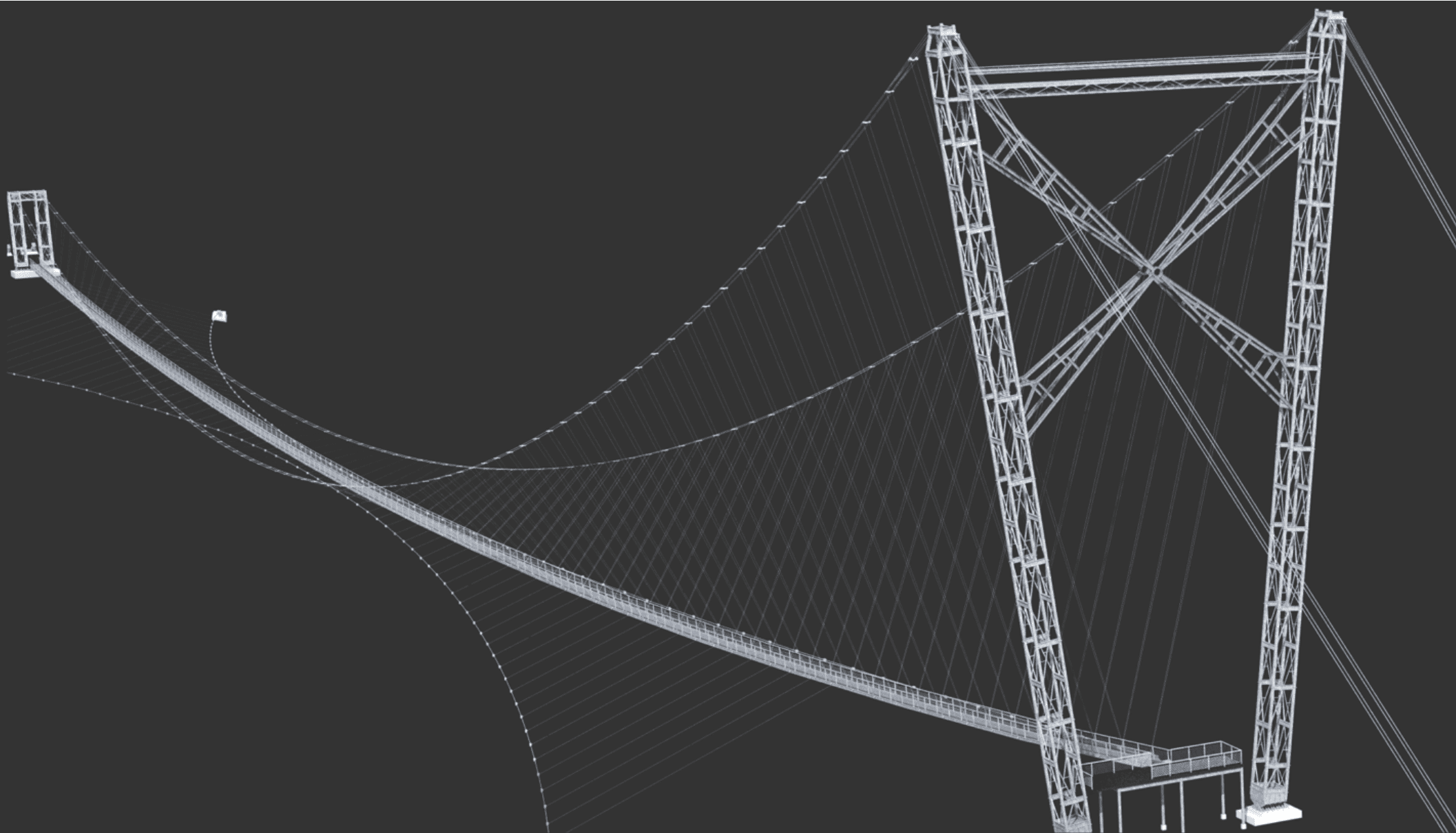
4. **Visitor Appeal**
– Create a bridge that attracts visitors from across the country and around the world.
– Offer a fun, interesting, visually appealing, and exciting experience.
– Design for a wide demographic, including children and grandparents.
5. **Movement and Excitement**
– Design the bridge to move or sway slightly with a cyclical motion rather than a shaking movement.
– Ensure the bridge’s height and motion create an exciting or slightly scary experience for about 10% of the general public.
– Make people walking on the bridge visible from any point along the bridge and from both ends.
– Allow people on the bridge an unobstructed view 360 degrees
6. **Structural Strength**
– Ensure the bridge is strong enough to withstand typhoons and earthquakes.
Detailed Design Process:
1. **Conceptual Design**
– **Brainstorming**: discussed designs with engineers of the longest bridges in Europe. Assembled a team of architects, engineers, and designers to brainstorm initial ideas that meet the criteria.
– **Sketching and Modeling**: Develop sketches and 3D computer models and physical models to visualize the bridge’s form, considering aesthetics, accessibility, and structural requirements.
– **Feasibility Study**: Conduct preliminary analyses to assess the feasibility of the proposed designs, focusing on technical and financial aspects.
2. **Engineering and Technical Analysis**
– **Structural Analysis**: Use advanced simulation software to model the bridge’s response to loads, including pedestrian traffic, wind, and seismic activity.
– built a Motecarlo model to simulate maximum possible winds over 1,000 years in the path of the bridge, using historical wind data and typhoon analysis.
– **Materials Selection**: Choose materials that offer the necessary strength and durability while contributing to the bridge’s visual appeal.
– **Accessibility Features**: Incorporate universal design principles, ensuring ramps and pathways are integrated seamlessly for wheelchair access.
3. **Detailed Design and Specifications**
– **Dimensioning**: Finalize the bridge dimensions, ensuring it is wide enough for wheelchairs to pass each other and accommodating entrances from both ends.
– **Movement Design**: Design the bridge’s suspension system to allow for controlled, cyclical movement, enhancing the excitement factor.
– **Visibility Considerations**: Ensure clear visibility along the bridge and from both ends, considering safety and aesthetic aspects.
4. **Aesthetic and Photogenic Elements**
– **Visual Appeal**: Integrate design elements that make the bridge photogenic and visually striking from the Dam and surrounding areas.
– **Lighting and Finishes**: Select lighting schemes and finishes that enhance the bridge’s appearance day and night. Designed for night lighting to be added.
5. **Safety and Resilience**
– **Seismic Design**: Incorporate advanced engineering techniques to ensure the bridge can withstand earthquakes.
– **Wind Resistance**: Design the structure to remain stable and safe during typhoons, incorporating aerodynamic features and robust anchoring.
6. **Community and Stakeholder Engagement**
– **Public Consultation**: Engage with local communities, landowners, and stakeholders to gather feedback and ensure they were aware of the progress and the design features.
– **Regulatory Approvals**: Work with regulatory bodies to secure necessary approvals and ensure compliance with all safety and construction standards.
7. **Construction Planning**
– **Project Management**: Develop a detailed project plan, including timelines, budgets, and resource allocation.
– **Construction Techniques**: Choose construction methods that ensure precision, safety, and efficiency.
By following this meticulous design process, we ensure that Japan’s longest pedestrian suspension bridge not only meets but exceeds expectations, becoming a landmark that offers safety, excitement, and universal accessibility.
Explore Other Stories
Gravitate Osaka Journal
Breaking ground part three
This post is a first in a series of posts showcasing the journey of the construction of the Goda bridge at Gravitate Osaka.
Breaking ground part two
This post is a first in a series of posts showcasing the journey of the construction of the Goda bridge at Gravitate Osaka.
Breaking ground part one
This post is a first in a series of posts showcasing the journey of the construction of the Goda bridge at Gravitate Osaka.

About Osaka Gravitate
Osaka Gravitate and Goda bridge stands as a marvel of modern engineering, being the longest two-way suspension pedestrian bridge in Japan and the fifth longest in the world. Spanning 420m, this iconic bridge offers not just a passage but an experience, with stunning views of the Aigawa dam and a variety of activities for visitors. Whether you’re seeking adventure or relaxation, Gravitate Osaka has something for everyone.

